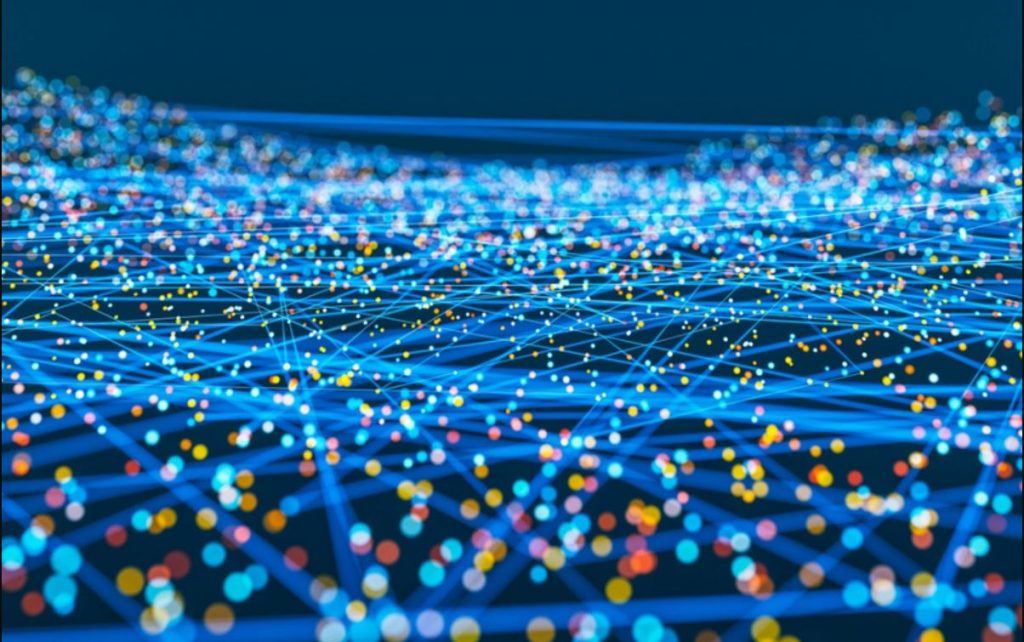
This is a guest post by Rebecca Ahmed
We’re approaching Q2 in 2024, and workplace trends from Q1 are starting to hit the market. With an election year, mixed U.S. economics, and a generational transition amongst our workforce composition, it’s important to focus on the needs of our employees and to ensure that we continue to shift workplace culture to become more positive and supportive.
Circle’s Q1 2024 Trend Report emphasizes that the future continues to be employee focused. Yet, as 80 percent of employees attribute poor mental health to work-related stress, it’s imperative that we coach employees in how to control their response and reactions to external factors. Offering critical insights about what constitutes negative (destructive) energy versus positive (constructive) energy will help enable workers to shift their own energy away from dwelling on annoyances and challenges and, instead, toward a more empowered, expansive outlook.
How can your organization create an energetic shift to ensure that your employees experience constructive energy and increase their sense of career fulfillment? Here are three recommendations:
1. Conduct an energetic audit
Organizations can select among four engagement phases from the Energetic Impact Index. Once individuals and teams have completed an Energy Leadership Index Assessment™, they are able to discover how their viewpoints and established patterns impact not only their own personal energy levels, but also the energy levels of those around them.
By discovering the thoughts, feelings, and emotions within a spectrum of seven energy levels, employees can then recognize the way in which they naturally approach situations under normal, as well as stressful, conditions.
The seven levels of energy within which individuals will discover their driving qualities include:
Level 1: The Safety Zone – Qualities of people in this lowest energy level are predominantly fear, self-doubt, adversity to risk, and avoidance.
Level 2: The Combative Zone – Qualities involve opposition, frustration, and disobedience.
Level 3: The Compromise Zone – Qualities are less destructive and tending toward constructive, such as accountability, compromise, and acceptance.
Level 4: The Service Zone – Qualities involve a propensity toward assisting others, including hospitable, caring, problem solving, and empathy.
Level 5: The Curiosity Zone – Qualities relate to leading with inquiry instead of judgment and involve curiosity, growth, and understanding.
Level 6: The Creative Zone – Qualities come from being tuned in to their intuition — creativity, collaboration, and flow.
Level 7: The Climax Zone – Qualities in people who attain this highest level of constructive energy encompass synthesis, passion, and innovation.
This powerful and unique assessment has been taken by thousands of people all over the world and has become an instructive tool for allowing organizations and individuals to become consciously aware of their energy levels. It showcases how individuals and teams can take action to increase their energy levels to drive motivation and success.
2. Analyze the data
One of the drawbacks of destructive energy is that it’s blinding. After completing the Energy Leadership Index Assessment™ and debrief, a hot spot analysis will demonstrate where your organization is experiencing these hidden pockets of low energy — and which areas need to be prioritized.
Through the analysis phase, employees will be asked to share insights into what motivates and drains their energy. By analyzing your employees’ pain points, you can prioritize what needs to be addressed first. Do you have some low hanging fruit that can cause quick energetic shifts from negative to positive? Do you have communication gaps that can be immediately addressed to provide a more psychologically safe environment for your employees? Are there some larger challenges that will take time to create a shift?
3. Create an action plan
After analyzing the data, create action plans based on priorities. Each action plan should be developed in collaboration with the individuals, teams, and departments impacted. By involving all stakeholders, you create buy-in for the actions needed toward create energetic shifts that will build a motivational workplace culture.
Ensure your action plans have clear objectives, align with your company values, and have measurable goals and timelines in place. Make certain that your plan is transparent and communicated to your entire organization so everyone understands its importance to the company. With each milestone, celebrate the progress toward promoting constructive energy.
Constructive personal energy fuels growth and inspires a productive workplace culture and environment. As your company experiences higher levels of constructive energy, your employees’ approach to situations in their day-to-day work will become easier, more enjoyable, and more energizing.
Note: This article contains my interpretation of the copyrighted work of Bruce D. Schneider and the Institute for Professional Excellence in Coaching (iPEC).
* * *
About the Guest Post Author:
Rebecca Ahmed is an award-winning speaker, a business consultant, and an Energy Leadership IndexTM Master Practitioner (ELI-MP. She is also a Professional Certified Coach (PCC) with the International Coaching Federation (ICF). Rebecca advises companies of all sizes on how to create a motivational workplace culture by transforming the energy and enthusiasm of their teams. Her new book is, The Energy of Success: Power Up Your Productivity, Transform Your Habits, and Maximize Workplace Motivation (Wiley, April 23, 2024). Learn more at energeticimpact.com.

